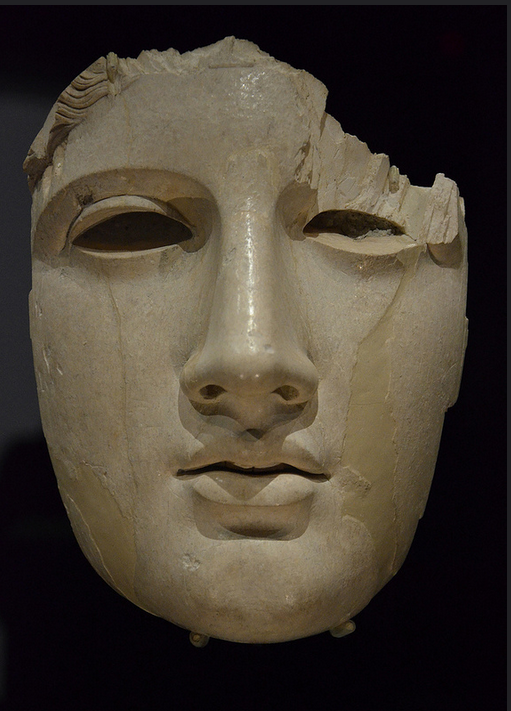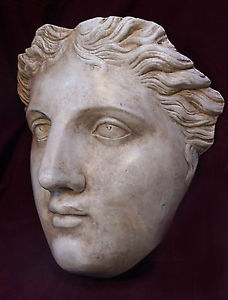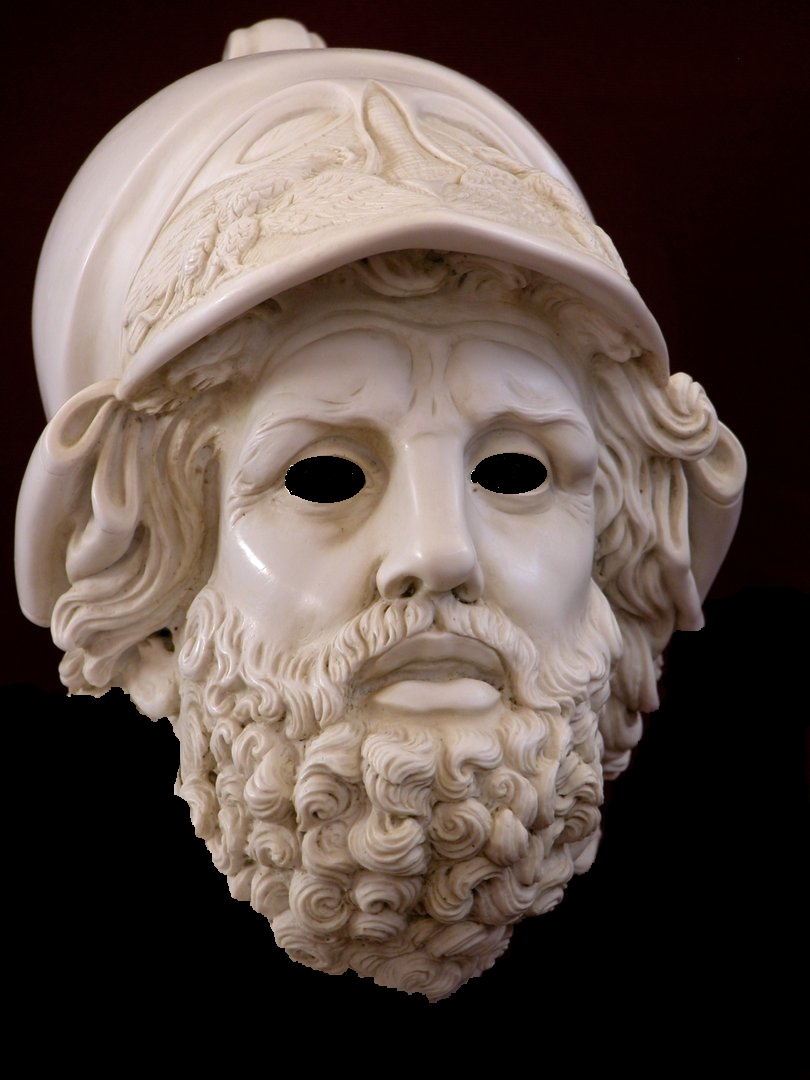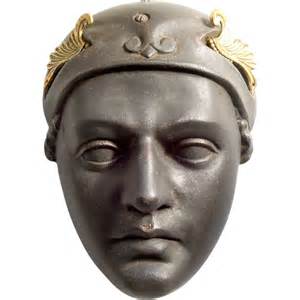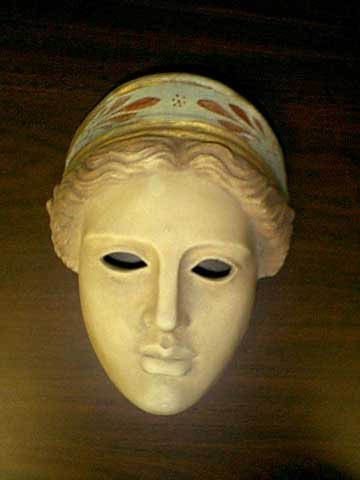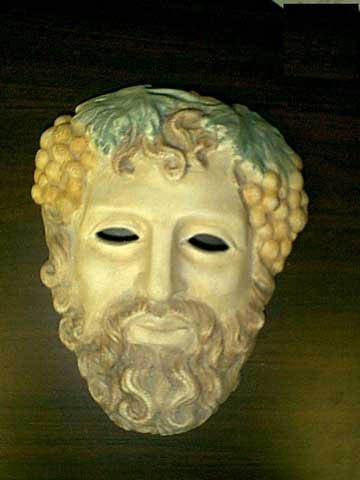Masks of Dii Consentes
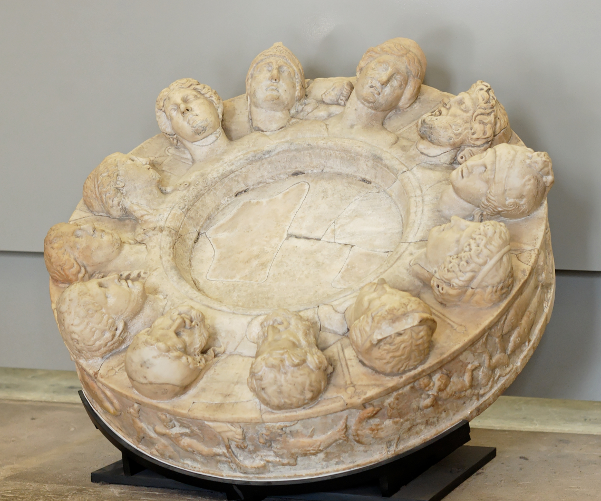
Although the ritual purpose of this 1st-century BC altar from Gabii is unclear, the twelve deities depicted correspond to the Dii Consentes.
Introduction to the Gods: The Dii Consentes, also as Di or Dei Consentes (once Dii Complices), was a list of twelve major deities, six gods and six goddesses, in the pantheon of Ancient Rome. Their gilt statues stood in the Forum, later apparently in the Porticus Deorum Consentium.
The gods were listed by the poet Ennius in the late 3rd century BC in a paraphrase of an unknown Greek poet:
- Juno, Vesta, Minerva, Ceres, Diana, Venus,
- Mars, Mercury, Jupiter, Neptune, Vulcan, Apollo
Livy arranges them in six male-female pairs: Jupiter-Juno, Neptune-Minerva, Mars-Venus, Apollo-Diana, Vulcan-Vesta and Mercury-Ceres. Three of the Dii Consentes formed the Capitoline Triad: Jupiter, Juno, and Minerva.
Background
The grouping of twelve deities has origins older than the Greek or Roman sources. The Greek grouping may have Anatolian, more precisely Lycian origins. A group of twelve Hittite gods is known both from cuneiform texts and from artistic representation. The Hittite Twelve are all male, with no individualizing features. They have a possible reflex in a Lycian group of twelve gods in the Roman Empire period. By 400 BC, a precinct dedicated to twelve gods existed at the marketplace in Xanthos in Lycia.
Herodotus also refers to a group of twelve gods in Egypt, but this finds no confirmation in Egyptian sources. The Greek cult of the Twelve Olympians can be traced to 6th century BC Athens and probably has no precedent in the Mycenaean period. The altar to the Twelve Olympians at Athens is usually dated to the archonship of the younger Pesistratos, in 522/521 BC. By the 5th century BC there are well-attested cults of the Twelve Olympians in Olympia and at the Hieron on the Bosphoros.
The references to twelve Etruscan deities are due to later Roman authors, writing long after the influence of the Greek pantheon had become dominant, and must be regarded with skepticism. Arnobius states that the Etruscans had a set of six male and six female deities which they called consentes and complices because they rose and set together, implying an astronomical significance, and that these twelve acted as councillors of Jupiter. Scholarly evaluation of this account is dependent on the hypothesis that the Etruscans originally immigrated to Italy from Anatolia. In this case, the Etruscan Twelve might have been cognate to the Hittite Twelve. It is, however, just as possible that the Etruscan Twelve were simply an adaptation of the Greek Twelve just like the Roman Twelve.
Twelve Olympians: the equivalent grouping of the Greek pantheon
In the ancient Greek religion and Greek mythology, the Twelve Olympians are the major deities of the Greek pantheon, commonly considered to be Zeus, Hera, Poseidon, Demeter, Athena, Apollo, Artemis, Ares, Aphrodite, Hephaestus, Hermes and either Hestia, or Dionysus. Hades and Persephone were sometimes included as part of the twelve Olympians (primarily due to the influence of the Eleusinian Mysteries), although in general Hades was excluded, because he resided permanently in the underworld and never visited Olympus.
Concept
The Twelve Olympians, also known as the Dodekatheon (Greek: Δωδεκάθεον,δώδεκα, dōdeka, "twelve" and θεοί, theoi, "gods"), were the principal deities of the Greek pantheon, said to reside atop Mount Olympus. The Olympians gained their supremacy in a war of gods in which Zeus led his siblings to victory over the Titans.
The concept of the "Twelve Gods" is older than any extant Greek or Roman sources. The gods meet in council in the Homeric epics, but the first ancient reference to religious ceremonies for the Olympians collectively is found in the Homeric Hymn to Hermes. The Greek cult of the Twelve Olympians can be traced to 6th-century BC Athens and probably has no precedent in the Mycenaean period. The Altar of the Twelve Gods at Athens is usually dated to the archonship of the younger Pesistratos, in 522/521 BC.
In ancient Greek religion, the "Olympian Gods" and the "Cults of Twelve Gods" were often relatively distinct concepts.
Membership
While the number was fixed at twelve, there was considerable variation as to which deities were included. However, the twelve as most commonly portrayed in art and poetry were Zeus, Hera, Poseidon, Demeter, Athena, Apollo, Artemis, Ares, Aphrodite, Hephaestus, Hermes and either Hestia, or Dionysus.
Hades, known in the Eleusinian tradition as Pluto, was not usually included among the Olympians because his realm was the underworld. Plato connected the Twelve Olympians with the twelve months, and implies that he considered Pluto one of the twelve in proposing that the final month be devoted to him and the spirits of the dead. In Phaedrus, Plato seems to exclude Hestia from the rank of "the twelve great gods".
At Olympia there were six altars dedicated to six pairs of gods: Zeus and Poseidon, Hera and Athena, Hermes and Apollo, the Charites and Dionysus, Artemis and Alpheus, and Cronus and Rhea. The historian Herodotus states that Heracles was included as one of the Twelve by some. At Kos, Heracles and Dionysus are added to the Twelve, and Ares and Hephaestus are not. For Pindar, the Bibliotheca, and Herodorus, Heracles is not one of the Twelve Gods, but the one who established their cult. Lucian (2nd century AD) includes Heracles and Asclepius as members of the Twelve, without explaining which two had to give way for them.
Hebe, Helios, Selene, Eos, Eros and Persephone are other important gods and goddesses who are sometimes included in a group of twelve.[citation needed] Eros is often depicted alongside the other twelve, especially his mother Aphrodite, but not usually counted in their number.
The Roman poet Ennius gives the Roman equivalents (the Dii Consentes) as six male-female complements, preserving the place of Vesta (Greek Hestia), who played a crucial role in Roman religion as a state goddess maintained by the Vestals.
The major Olympians (the Dii Consentes)
- Zeus / Jupiter -- King of the gods and ruler of Mount Olympus; god of the sky, lightning, thunder, law, order, justice. Youngest child of the Titans Cronus and Rhea. Symbols include the thunderbolt, eagle, oak tree, scepter, and scales. Brother and husband of Hera, although he had many lovers, also brother of Poseidon, Hades, Demeter, and Hestia.
- Hera / Juno -- Queen of the gods and the goddess of marriage and family. Symbols include the peacock, cuckoo, and cow. Youngest daughter of Cronus and Rhea. Wife and sister of Zeus. Being the goddess of marriage, she frequently tried to get revenge on Zeus' lovers and their children.
- Poseidon / Neptune -- God of the seas, earthquakes, and tidal wave. Symbols include the horse, bull, dolphin, and trident. Middle son of Cronus and Rhea. Brother of Zeus and Hades. Married to the Nereid Amphitrite, although, like most male Greek Gods, he had many lovers.
- Demeter / Ceres -- Goddess of fertility, agriculture, nature, and the seasons. Symbols include the poppy, wheat, torch, cornucopia, and pig. Middle daughter of Cronus and Rhea.
- Athena / Minerva -- Goddess of wisdom, reason, intelligent activity, literature, handicrafts and science, defense and strategic warfare. Symbols include the owl and the olive tree. Daughter of Zeus and the Oceanid Metis, she rose from her father's head fully grown and in full battle armor.
- Apollo / Apollo -- God of light, prophecy, inspiration, poetry, music and arts, medicine and healing. Son of Zeus and Leto. Symbols include the sun, lyre, swan, and mouse. Twin brother of Artemis.
- Artemis / Diana -- Goddess of the hunt, virginity, archery, the moon, and all animals. Symbols include the moon, deer, hound, she-bear, snake, cypress tree, and bow and arrow. Daughter of Zeus and Leto and twin sister of Apollo.
- Ares / Mars -- God of war, violence, and bloodshed. Symbols include the boar, serpent, dog, vulture, spear, and shield. Son of Zeus and Hera, all the other gods (except Aphrodite) despised him. His Latin name, Mars, gave us the word "martial."
- Aphrodite / Venus -- Goddess of love, beauty, and desire. Symbols include the dove, bird, apple, bee, swan, myrtle, and rose. Daughter of Zeus and the Oceanid Dione, or perhaps born from the sea foam after Uranus' semen dripped into the sea after being castrated by his youngest son, Cronus, who then threw his father's genitals into the sea. Married to Hephaestus, although she had many adulterous affairs, most notably with Ares. Her name gave us the word "aphrodisiac", while her Latin name, Venus, gave us the word "venereal".
- Hephaestus / Vulcan -- Master blacksmith and craftsman of the gods; god of fire and the forge. Symbols include fire, anvil, axe, donkey, hammer, tongs, and quail. Son of Hera, either by Zeus or alone. Married to Aphrodite, though unlike most divine husbands, he was rarely ever licentious. His Latin name, Vulcan, gave us the word "volcano."
- Hermes / Mercury -- Messenger of the gods; god of commerce, thieves, eloquence and streets. Symbols include the caduceus (staff entwined with two snakes), winged sandals and cap, stork, and tortoise (whose shell he used to invent the lyre). Son of Zeus and the nymph Maia. The second-youngest Olympian, just older than Dionysus.
- Hestia / Vesta -- Goddess of the hearth and of the right ordering of domesticity and the family; she was born into the first Olympian generation and was one of the original twelve Olympians. Some lists of the Twelve Olympians omit her in favor of Dionysus, but the speculation that she gave her throne to him in order to keep the peace seems to be modern invention. She is the first child of Cronus and Rhea, eldest sister of Hades, Demeter, Poseidon, Hera, and Zeus.
- Dionysus / Bacchus -- God of wine, celebrations, and ecstasy. Patron god of the art of theatre. Symbols include the grapevine, ivy, cup, tiger, panther, leopard, dolphin, goat, and pinecone. Son of Zeus and the mortal Theban princess Semele. Married to the Cretan princess Ariadne. The youngest Olympian god, as well as the only one to have a mortal mother.
Origins of the Masks Dii Consentes
- These masks are written about in highly rare versions of the Magus Ars Lexus. Up until 2035 they were buried in a tomb outside Pompeii. It is not known if all the Masks were present or if some are lost to the sands of time. These masks were constructed by the artist Phidias, around 420 BC at Olympia. Phidias was a Mage of some power, and historical documents held by the Order of Hermes tell how he worked his magic by math and various rites worked in the names and styles of Roman Gods. Phidias was known for having made several objects of power in his time, which had famous use.
- In a diary found in London by the Tremere John Dee of an Archeologist Ottavio Cassano,there were unannotated scribbles on a copy of Magus Ars Lexus about masks made by a rebellious apprentice named Vebronus Alexus Torenus of Hades, Cronus, and Rhea. The reality of these masks is doubtful.
The Mask of Jupiter
File:Masks of Dii Consentes Jupiter.jpg
This mask is made of a marble plaster, ivory, gold, silver, and copper melded and smoothed together in a beautiful mask. When put to the face is molds to the wearer, giving him or her slightly dusky skin, with pale brows. The mask gives the wearer abilities approximated so: Charisma 5, Leadership 5, Presence 5, Thaumaturgy (Levinbolt) 5. Wearing the mask renders the wearers male.
The Mask of Ceres
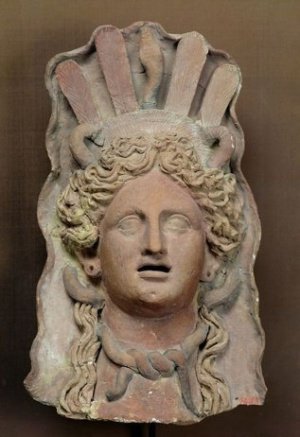
As the keeper of the laws of life and death this mask has the most interest to those of Necromantic leanings. Made of Ivory, gold, and amathyst the mask is surpisingly very light to hold. The mask when worn renders the wearer female, if they are not already. The mask gives the wearer abilities approximated so: Intelligence 5, Empathy 5, Healer Valeren 5, Necromancy 5 (Path of Ruin) 5
The Mask of Neptune

Neptune is the Lord of all water. The Mask of Neptune is constructed of Ivory, Jade, Gold, and Brass. Wearing the mask grants the following abilities approximated as: Perception 5, Intimidation 5, Celerity 5, Thaumaturgy 5,(Neptune's Might) 5
The Mask of Minerva
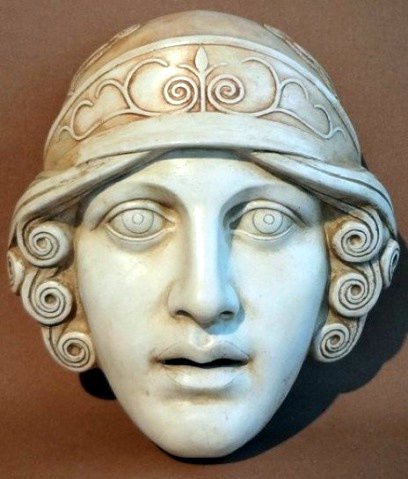
Minerva is the Lady of Artisans. Her mask is made of Ivory, Copper, Silver, and Rubies. The abilities conferred by the mask are approximated here: Perception 5, Crafts 5, Auspex 5, Thaumaturgy (Ars Memorativa) 5
The Mask of Apollo
The Mask of Juno
The Mask of Mars
The Mask of Venus
The Mask of Vulcan
The Mask of Mercury
The Mask of Vesta
[[]]
The Mask of Diana
The Mask of Bacchus
Keepers of the Masks
Last known in the Ars Magus Lexus to be in the sepulchre of Theiea Ariadne.
Also entombed with her was Isa Mac Aba and Siors Aldegar.
